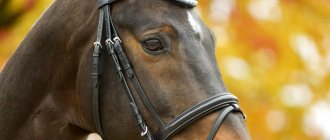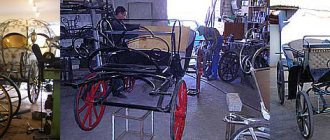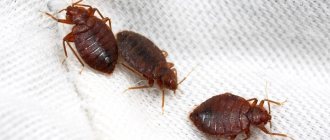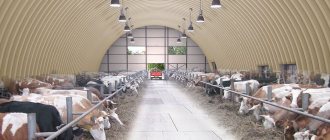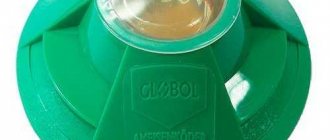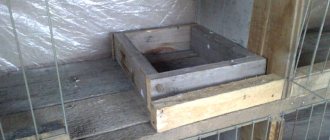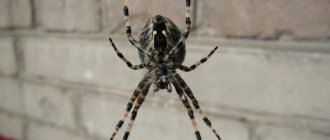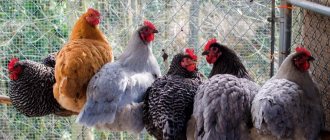Very often, the concept of “horse care” only means arranging a stall for a four-legged friend, good pasture, as well as high-quality nutrition. However, this is not the entire list of horse needs that a caring owner must satisfy by taking on such a high responsibility - maintaining one horse or several. After all, there are also cold winter months, during which horses need protection not only from wind and precipitation, but also from low temperatures.
In frosty and simply cold seasons, a warm blanket made well and according to all the rules will help preserve the health of the horse, and therefore the strength and time of the owner. Every caring owner can sew it on their own without much effort. However, if for some reason this is impossible or difficult, then there is always the opportunity to buy it.
Fabric selection
The saddle pad will consist of three layers of fabric. The bottom of the saddle pad is best sewn from flannel fabric; calico and denim are also suitable. For the filler, you can take CPP, padding polyester or even foam rubber. Well, for the top you can choose any material of your choice, just keep in mind that it is better to take the fabric as a solid piece, without pieces.
Edging
For edging, you can choose a ready-made edging tape or cut it out. It is not recommended to use keeper tape - it shrinks a lot when washed, which can warp the saddle pad.
For stalemates and fastening
For stalemates, synthetic belt slings with a width of 2.5 - 3 cm are best suited, and for attaching to harnesses - Velcro.
Material consumption
To sew the simplest saddle pad, you will need pieces of fabric 75 x 75 cm for each half; top – one layer, filler – three layers, bottom – one layer. For edging – 430 cm of tape, Velcro – 32 cm, slings – 140 cm.
Kinds
There are several types of saddle pads:
- for winter and summer;
- with and without pockets;
- flavored or not.
But products made from cotton, felt and fur are very popular. Depending on the pattern, ammunition of the same type may differ in the following parameters:
- cutout under the withers;
- arch of the back;
- stagger;
- placement or absence of straps for girths or girths.
Did you know? The term "saddle pad" is taken from the Italian language. And it means “plate” - a piece of lining.
Competitive
Designed for show jumping, under a jumping saddle. Most often it has a shortened shape in the form of a drop.
Dressage saddle pad
It has a square shape, without a forward wing and is designed for a dressage saddle. This saddle is distinguished by its shorter size and is balanced by wings extended downwards.
Shamrock
An elegant piece of equipment with a slightly longer back on the sides. Suitable for show jumping and all-purpose saddles.
We sew the workpiece
To begin with, we fold the layers of filler, pin them together, now they need to be basted first with vertical stitches - every 15 cm, then along the edge and in the middle we make a horizontal basting. In order to prevent the layers of filler from shifting, some craftsmen recommend sweeping each layer of filler together. Then we pin the bottom layer to the canvas and sew it with large stitches with a contrasting thread at intervals of about 15 cm. Don’t worry if the seams turn out crooked, their main role is to outline and hold the bottom layer. But we try to make the stitches on the bottom layer carefully and without wrinkles.
Now we put the pattern on top of the canvas. The patterns should be arranged in a mirror image so that you don’t end up with two one-sided ones.
We pin the pattern to the fabric with pins and outline it with chalk or soap. Don't forget to mark the fabric where the patches will be attached. If you are going to sew a saddle pad with quilting, then also draw lines for quilting.
It is better to do quilting only inside the outline of the saddle pad, since there you can securely fasten the ends of the threads.
Quilting the saddle pad begins with the central vertical seam. The optimal stitch length is considered to be 3.5 - 4 mm. While sewing, the layers need to be periodically straightened with your hands - they will inevitably wrinkle. Periodically evaluate the quality of work - if something does not suit you, it is better to redo it.
Then we need to stitch around the perimeter of the part we need, not forgetting to deviate 2 - 3 mm from the contour inward - this way we will secure the edge and make it easier for ourselves to work on the edging. After this, we lay a line along the contour of the upper edge of the future saddle pad.
We iron our workpiece.
How to choose the right one when purchasing
When choosing a saddle cloth, first of all pay attention to the material. For heavy loads, it is advisable to choose ammunition with a porous structure inside. This structure allows moisture to be immediately released outside. Sheepskin saddle pads have proven themselves well. They provide excellent shock absorption and prevent overheating.
Among the outer layer materials, it is better to choose cotton or polyester. But each of them has its own pros and cons. For example, cotton is easy to care for and hypoallergenic. But in extreme conditions it does not fully perform its functions and quickly loses its shape and color.
Polyester, on the other hand, is more technologically advanced, easier to care for and retains its original appearance longer, but can cause allergic reactions, and with prolonged use (more than one day) horses may develop heat rash. In addition, such a saddle cloth needs frequent washing.
Important! The palm of your hand should be placed between the mane and the saddle pad.
When choosing a saddle pad, it is important to stick to the size of your horse. If the equipment is too small, it will injure the withers; if it is too large, it will get lost under the saddle. For example, standard bedding for high-blooded or large horses can cause back chafing.
We cut out the parts and sew a saddle pad
Now we have to carefully cut out the parts along the contour.
Where the back seam will be, cut it off at a distance of 2-2.5 cm from the outline.
We need to spread the outer layers of the saddle pad to the sides, iron them, then carefully cut out the filler so that its edges exactly follow the contours of the part.
We apply the halves in the lower layers to each other, baste and sew, preferably with two lines. We cut off the excess fabric, leaving 1 cm. Iron the edges to the sides and attach the edging tape to the top. All that remains is to make the edging around the edges and the saddle pad is ready!
If you wish, you can sew a pocket for goodies to the saddle pad or decorate it with a beautiful edging ribbon with patterns.
What is a saddle pad for a horse?
A saddle and a saddle pad are indispensable pieces of equipment that complement each other. Simply put, a saddle pad (or saddle cloth, bedding) is a special pad under the saddle, which is fixed to the girth using specially designed straps. It can be square or rectangular.
Important! People often confuse a saddle pad with a sweat pad. But the saddle pad is made of durable fabrics and necessarily follows the design of the saddle, while the saddle pad has a lighter base and can only be square or rectangular in shape.
Today, manufacturers offer a wide selection of ammunition, which differs in both the base and purpose, as well as parameters and colors.
The functions it performs can indicate the need for a saddle pad:
- a buffer and cushion between the horse's seat and back;
- softens shocks if the weight on the saddle is not accurately distributed;
- absorbs sweat;
- prevents the appearance of diaper rash on the animal's skin;
- prevents abrasions and irritations on the skin.
Varieties
There are saddle pads for every taste:
- Lining with pockets.
- For different seasons - winter, summer.
- With a cutout for a horse's withers.
- With wing extension.
- With straps for girths and girths.
- With porous filler. The fabric has a cellular structure. This helps the horse's sweat be absorbed and released more quickly. Recommended for active training.
- Made from sheepskin. Non-toxic dyes are used for production. These saddle pads are suitable for the sensitive skin of a horse. They fight overheating and absorb well. The disadvantage is the high cost.
- For long trips. They are denser, with a thick lining.
Each type of equestrian sport has its own characteristics, for example:
- for show jumping, the bedding is shorter, in the shape of a drop;
- for dressage - square, the wings are not brought forward, extended downwards;
- saddles for different competitions (universal) are equipped with a lining that resembles a trefoil.
Do-it-yourself saddle pad sewing technology
marocamy Chapter 1. Materials
I prefer to sew only from cotton materials, although polyester fabrics can also be used for the top. Top - cord, gabardine, denim Filling - CPP (cotton canvas stitched fabric) Bottom - flannel, calico, denim In the photo (from left to right): cord, gabardine (yellow and blue), jeans, cotton fabric, calico (black and yellow)
Accessories: For edging, you can use ready-made tapes (pictured from top to bottom: keeper tape, edging tape) or cut it yourself. I do not recommend keeper tape, because... when washed, it can shrink strongly, causing the saddle pad to warp. For stalemates: a synthetic belt sling 2.5-3 cm wide. For fastening: Velcro.
Polyester threads for sewing clothes. If the machine allows, you can thread the needle with denim or stitching thread.
One half of the saddle pad requires pieces of material 75cm x 75cm: top 1 layer, filler 3 layers, bottom 1 layer; edging tape: 430cm; slings: 140cm; Velcro: 32cm.
These are the basic materials you will need to make a simple saddle pad.
If you want to sew something more complex, stores offer a wide range of finishing cords, ribbons, fabrics, tassels and embroidery.
It is often very difficult to choose the same color fabric, Velcro, webbing and edging.
Then ingenuity comes to the rescue: - patches and edging can be sewn from the top material; - in the absence of a suitable sling, add a decor to the saddle pad that would match the existing sling (for example, there is a fabric of a beautiful blue color, but the store does not have slings and Velcro of this shade , available in white and black; we add a white edging to the saddle pad and the white patches are already in keeping with the theme); - in the absence of Velcro, we use another type of fastening: a buckle, a frame.
Chapter 2. Purchasing and preparing materials
Having decided on the materials, we begin calculating the quantity to purchase. For convenience, it is better to take fabrics 150cm wide, just from the cut you will get two halves of a saddle pad. It is necessary to take into account that cotton fabrics shrink after washing, so they should be washed before cutting. HPP drops very strongly.
Of the 10 meters purchased, only 7 remained after decating (30% shrinkage). The flannel also unexpectedly shrunk a lot - 10%. It is better to take natural fabrics with a small reserve just in case - a lot is not a little. Polyester doesn't shrink. In general, it is better to wash and iron all fabrics before cutting.
Usually I first rinse the fabric in hot water, then in cold water, back and forth several times, you can immediately see if the fabric is shedding a lot, then put it in the machine for a wash cycle at 30 degrees. After drying, I carefully iron it at the temperature recommended for this material and make cuts of 75cm x 75cm.
The basis of the pattern can be removed from the factory saddle pad you like (by tracing it on a newspaper
Source
Horse blankets
To protect your horse from insect bites in warm weather, you will need cotton blankets. In slushy weather or after good physical activity, a mesh cape can help you dry quickly.
There are also special drying capes, which are indispensable in hot climates. They are attached to the horse throughout the body, from the head to the tail, promoting drying and protection from insects.
Night blanket
In the natural environment, wild horses do not freeze because they are constantly moving, but when standing idle in the stables, their movement is significantly limited, they freeze more, and drafts are very harmful for them.
How to use
Saddle pads are used for ponies in city parks and horses in equestrian clubs. It is used by owners who care about the horse’s health and human comfort. To be worn while saddling:
- Find the front part of the saddle pad. If you fold it in half, one edge will be higher. This is the front part.
- The left edge is placed just above the horse's withers.
- Slide down with a slight movement. The left edge of the saddle pad should be slightly below the center of the withers. The seam is in the middle - along the horse's spine. The saddle cloth is laid in a “house”.
- A sweatshirt, a fur coat or a saddle is placed on top.
Hygiene is important. Even a small speck under a saddle cloth can lead to chafing. Before leaving, the horse must be cleaned. After a walk or workout, the saddle pad is drenched in sweat. It is washed and dried.
A saddle pad is a useful part of horse harness. It protects the horse's health and helps the rider. This part of the ammunition can be made with your own hands.
Horse equipment
This topic cannot be covered in a few words, so we will only touch on some components of the equipment. The most important components for control in “equestrian driving” are the bridle and bit. But in clothes - this is a blanket, a saddle pad and a sweat pad. The last two are necessary to protect the maned friend’s back from sweat and swelling. The saddle must fit the horse clearly, otherwise no amount of bedding under it will save the situation. The saddle pad makes it possible to soften shocks, thereby eliminating possible abrasions.
The word “saddle pad” came to us from the Italian language. It means "plate", that is, a piece of lining. It is placed across the animal's back with the long side. The edges should be visible from under the saddle.
How to sew a horse blanket
It’s very easy to get a blanket now, however, if the owner wants to sew it himself, then the first step is to decide on the material . When selecting it, it is worth considering that rustling fabrics can very frighten the horse when it is first put on, and subsequently cause him discomfort. It is also worth understanding that waterproof fabrics do not “breathe” at all, and this is unpleasant for the horse, and the owner will have to constantly check whether the horse is sweating. For an insulated version of blankets, the following options are optimal:
- wool,
- fleece,
- padding polyester
If you just want a light cape, then you should opt for mesh and cotton materials. To make fastening connections, you will also need carabiners (usually 5 or 6 pieces) and an equal number of rings. In addition to the above, you will need:
- special braid (trok) approximately 2 cm wide;
- wide elastic band.
When all the required components have been purchased, you can begin taking measurements . If it is not possible to measure the horse for which blankets are supposed to be sewn, the following dimensions are taken as a standard basis:
- length - 2.4 m,
- width - 2 m,
- height - 0.2 m,
- collar length - 60-65 cm.
If the pattern has already been drawn or found, then you can start sewing.
Procedure:
- narrow parts of the cutting need to be stitched into a single piece,
- secure the corners by placing the pieces on top of each other,
- cut the collar
- Sew a sling around the perimeter of the entire product so that the edges do not wear out.
- On the wrong side, sew a drawstring with open edges, departing 140 cm from the collar.
- Insert an elastic band around the perimeter and sew it in the form of a ring.
Choosing a pattern
For the pattern, you can take any suitable factory saddle pad and outline it on paper
For the pattern, you can use the above diagrams, you can also take any suitable factory saddle pad and outline it on a newspaper or any other paper. Don't forget to indicate the location of the stalemate.
